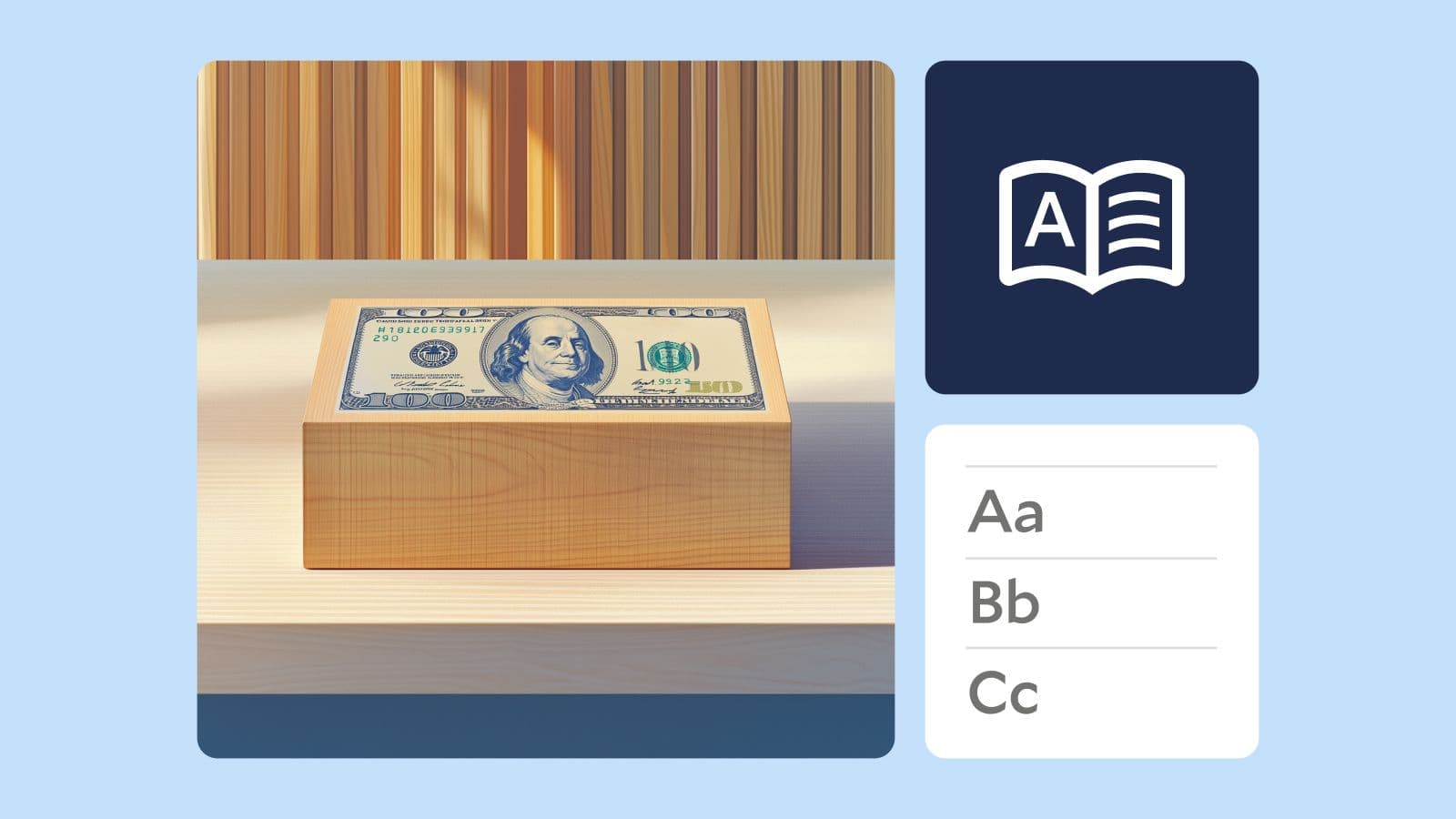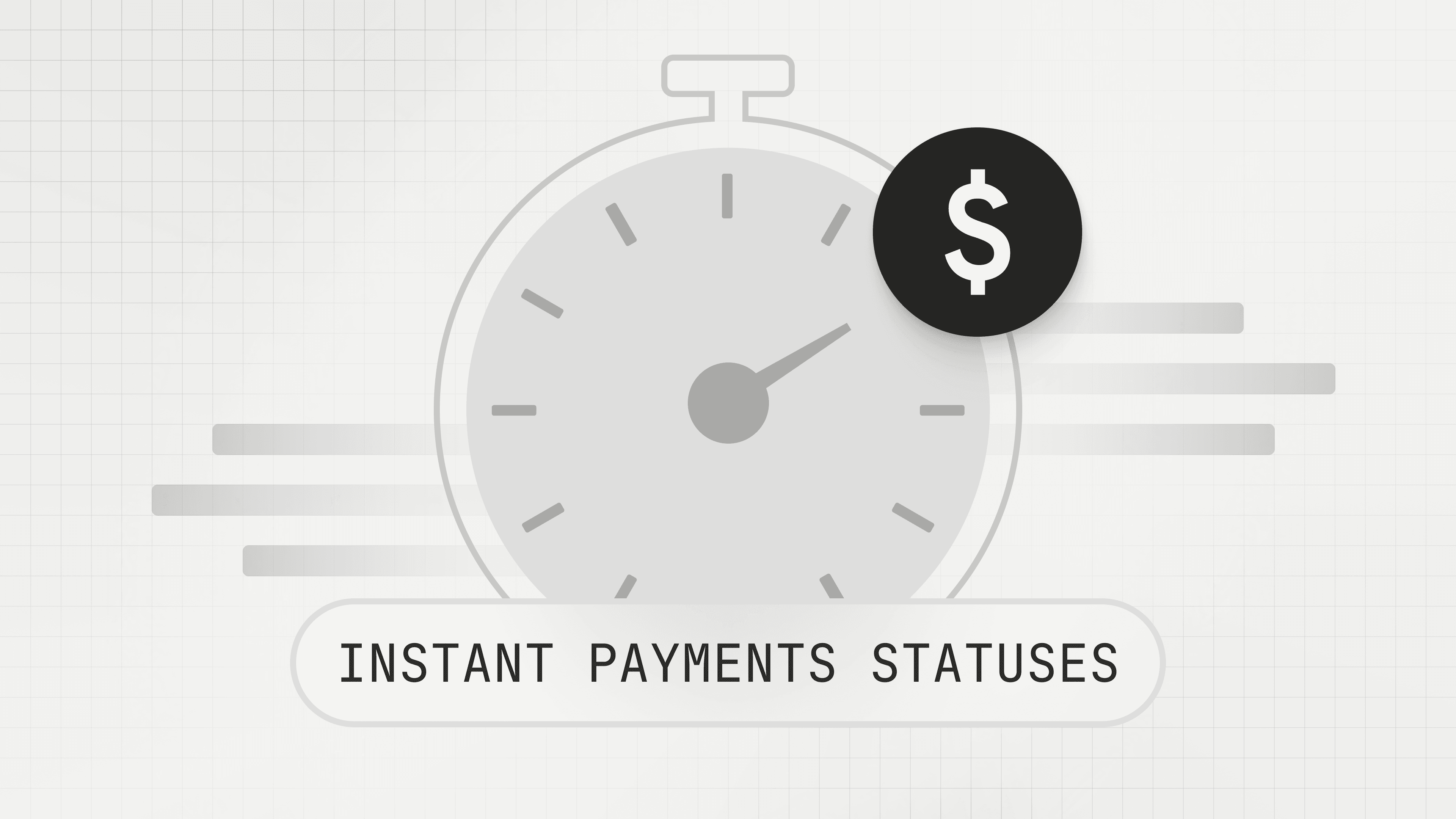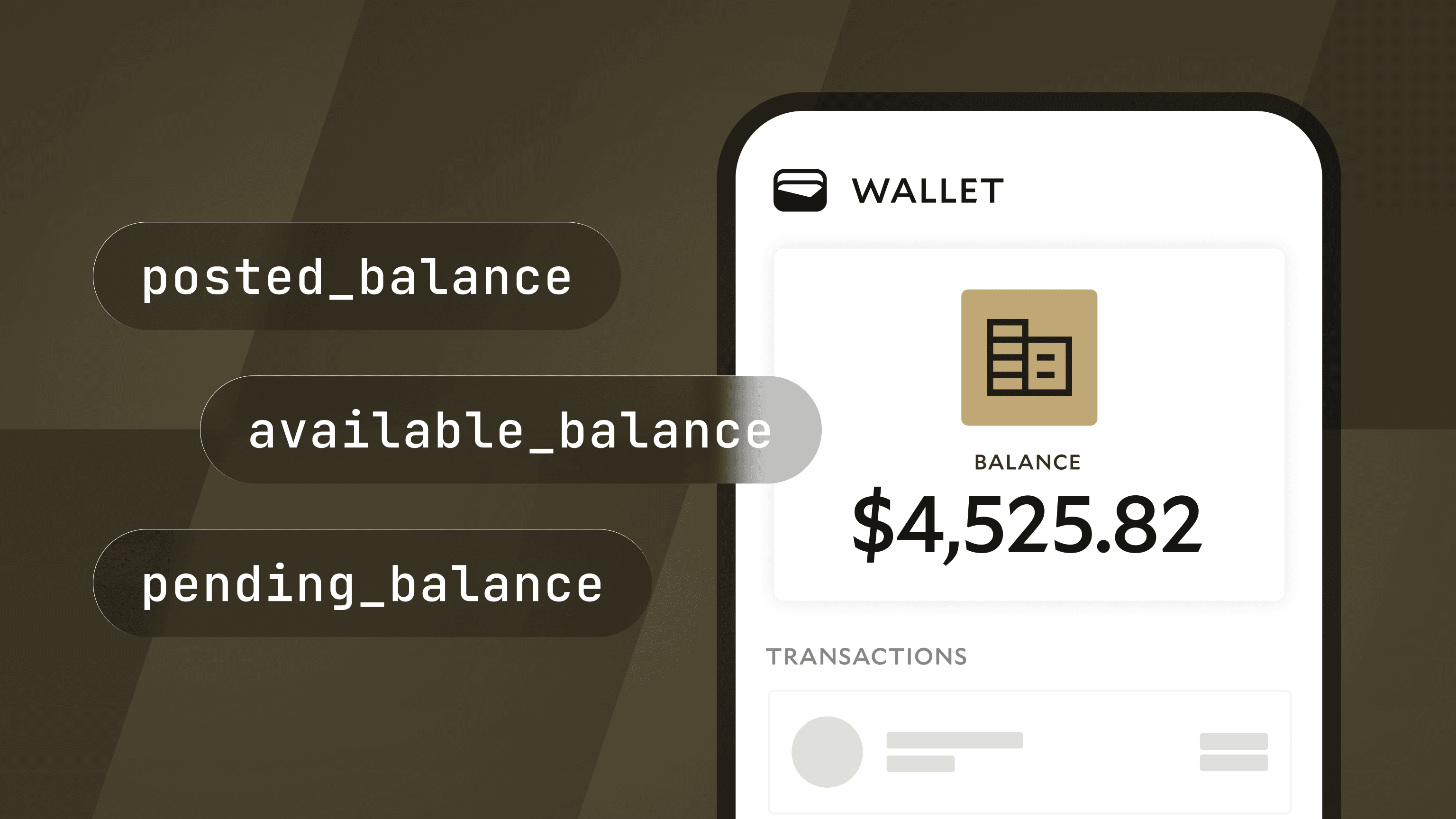A Short History of Ledgers
The history of ledgers is more intriguing than you might think. This journal traces notable moments in the evolution of immutable, double-entry, and scalable ledgering.

From stone tablets to high-throughput databases, the ledger has undergone significant change across the years. Not only are the ledgers of yore interesting to look at but the history of ledgers is foundational to the history of written language, international commerce, capitalism, and even art. Read on to find out why.
What Is a Ledger?
The dictionary tells us a ledger is a book of accounts containing debits and credits “posted from books of original entry” [1]. Books of original entry contain the first records of a transaction—transactions that are then transferred to a ledger.
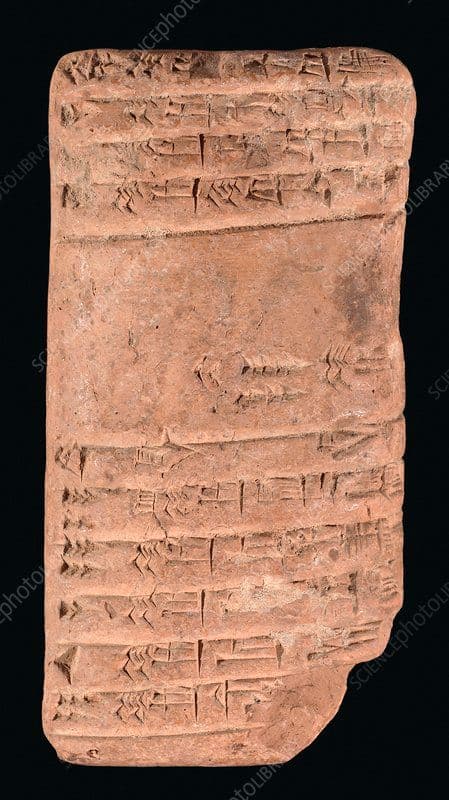
A clay accounting ledger for barley from 2200-1900 BC
Another meaning? A ledger is a flat stone covering a grave. Given the origins of the word (purportedly derived from leyen or leggen in Middle English, “to lay”), it’s not hard to conceive of an accounting ledger as the place data recorded elsewhere is formally laid down (or even laid to rest).
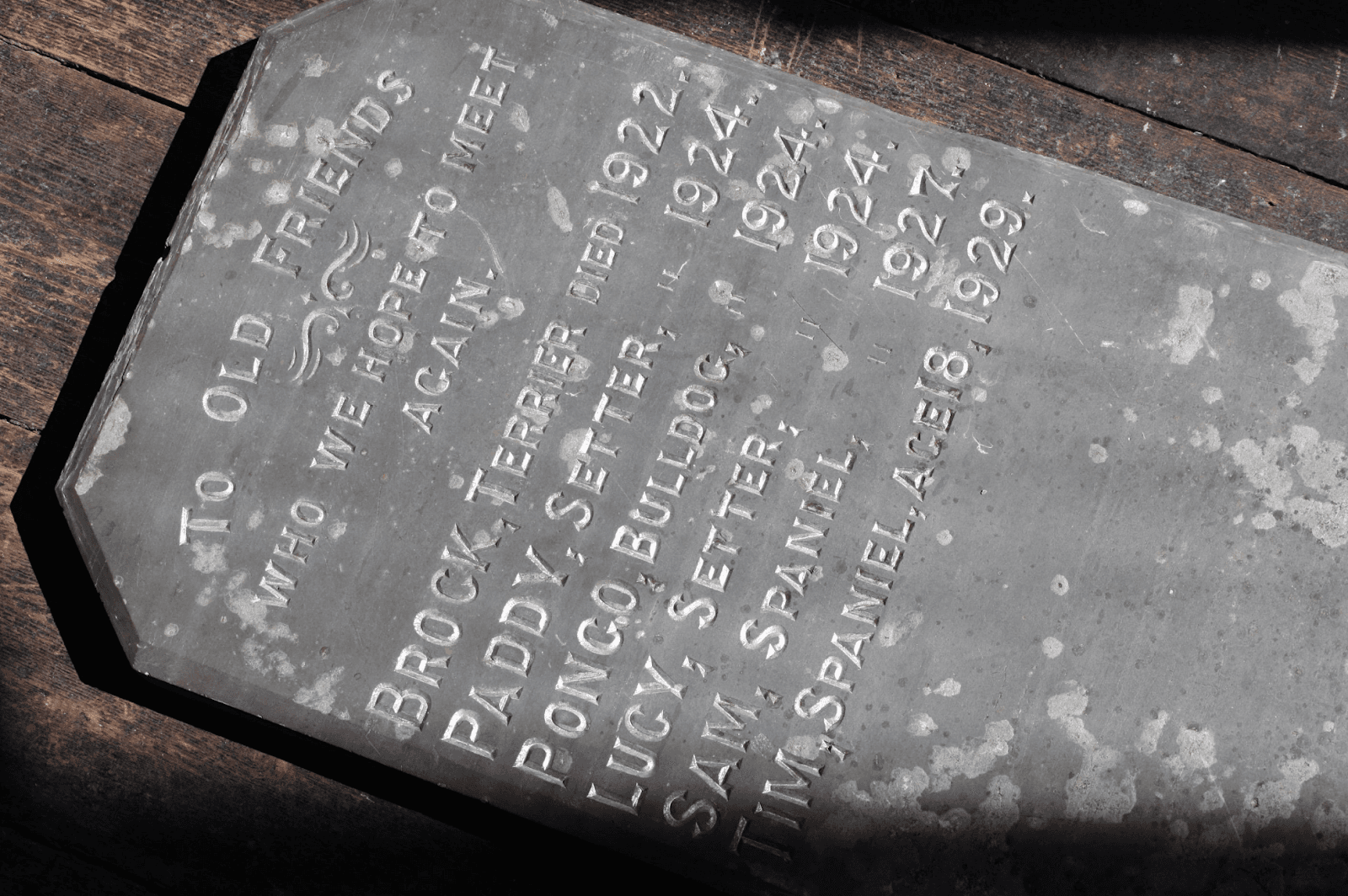
Another kind of ledger: a 20th Century Welsh stone commemorating beloved dogs that crossed the rainbow bridge
In terms of record keeping, examining historical ledgers spotlights the data people found most pressing and vital to record. Indeed, ledgers from times past provide a window into the obsessions, nuances, nitpicks, and values of daily life across centuries.
Historical Ledgers: The Evolution of 3 Key Attributes
A beneficiary of the legacy we’ll examine below, Modern Treasury offers a financial ledger database. This article will employ the three essential characteristics of modern financial ledgers to dig into the history and evolution behind this seminal technology: ledgers should be immutable, double-entry, and scalable. Let’s explore each of these attributes as they relate to the historical transformation of ledgers.
Immutability
The first known ledgers not only provide a record of early accounting—they also showcase the primary origins of written language. Clay tablets from Mesopotamia (modern day Iraq)—the earliest dating back to 3400 B.C.—were used to account for grain and workers as part of business, bureaucratic, and personal record keeping. As you’ll see from the examples below, the immutability (or total resistance to change) exhibited by these tablets is mighty.
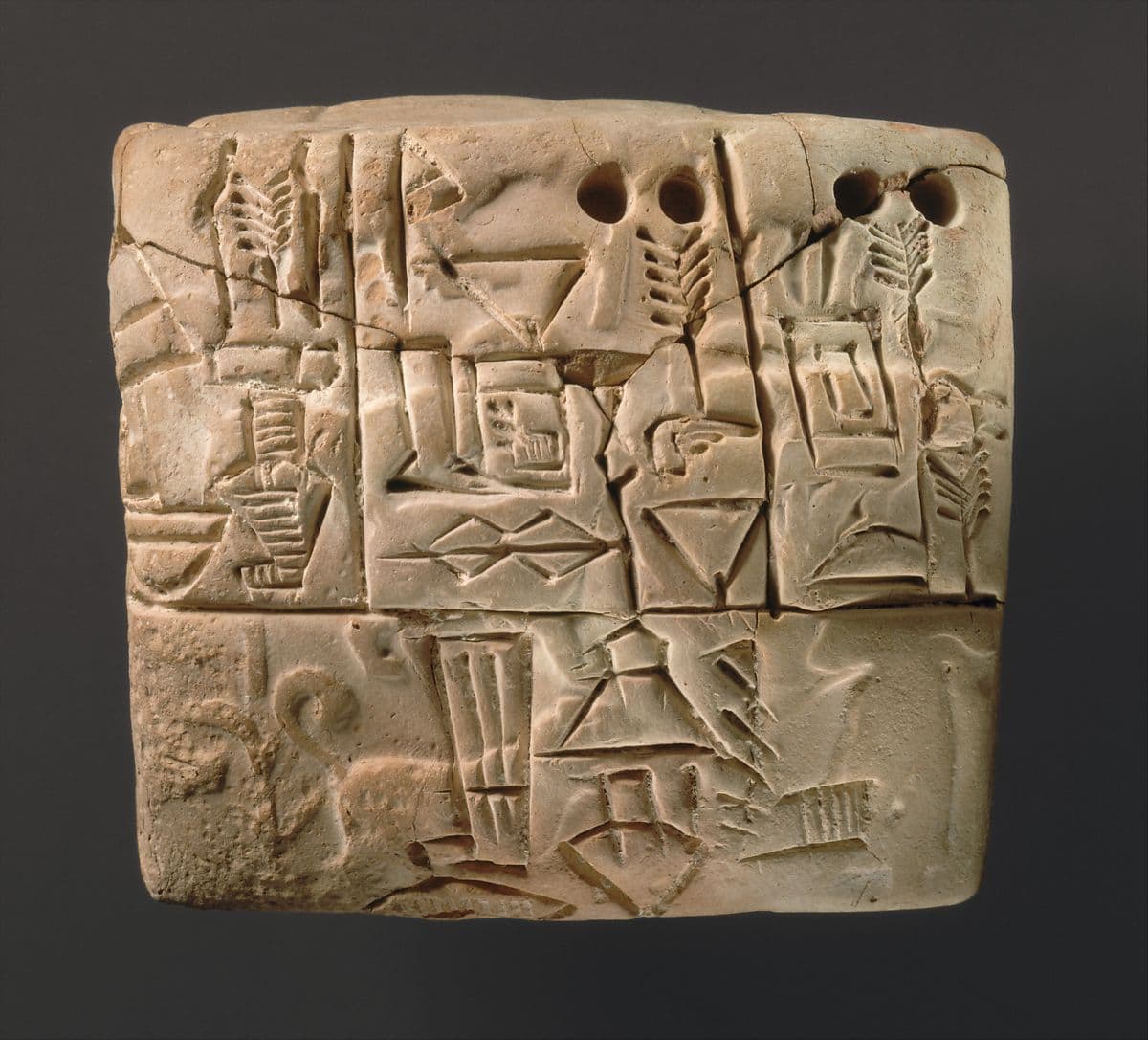
An administrative account of barley distribution with a male figure, hunting dogs, and boars (circa 3100–2900 B.C.)
Pictographs combining pictures and words (also called Proto-Cuneiform) evolved into Cuneiform, what historians recognize as the first form of written language. These pictographs were arranged in rows and columns, with pictures to represent people and items, and holes to indicate quantity.
As one writer puts it, “the ancients invented Excel before Word!” To see more, access an incredible archive of Cuneiform accounting here.
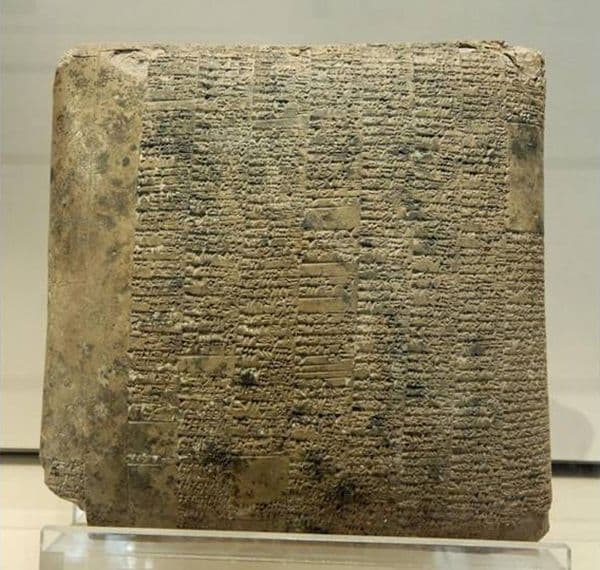
The Getty calls this one “Pre-Excel record-keeping: Mesopotamian clay tablet inscribed with the annual balance sheet of a state-owned farm,” (circa 2040 B.C.)
Fun fact: not all early ledgers were meant to be immutable. In fact, clay was often used historically for daily records—records that could be removed by adding water to the clay to make it soft again. Ledgers deemed significant enough were fired to preserve the immutability.
Why immutability matters
In the case of historical ledgers, setting accounts in stone (literally) helped make up for unreliable human memory. Whether the ancients feared ledger tampering or fraud is a bit mysterious, but it seems likely these accounting ledgers had fewer people and tools interacting with them than our modern digital ledgers do today.
In software, immutability helps ensure data integrity. Because ledger entries are “append-only,” a historical record is generated that is immutable—if mistakes are made, they are corrected with a subsequent entry. In addition to benefits including protection against bugs and easier legibility, the key upsides of append-only immutability are that:
- It’s simpler to recalculate balances
- Reviewing transactions is more straightforward
- Reconstructing statements is quicker and clearer
- It's easier to troubleshoot when errors occur
Modern Treasury’s Ledgers product helps you log transactions which are final and posted. After that, any adjustments to prior transactions are also logged in the ledger as contra entries, making it easier to perform an audit of balances as necessary.
Double-Entry
The introduction of double-entry bookkeeping is widely considered the birth of modern accounting. Although the official start of the double-entry method is contested (with some linking the true origins to Rome, China, and the Middle East), Italian mathematician Luca Pacioli tends to get credit.

Luca Pacioli (and unknown portrait bomber) by Jacopo de' Barbari circa 1495–1500
Pacioli included a detailed explanation of double-entry accounting in his massive book, Summa de arithmetica, geometria, proportioni et proportionalita, published in Venice in 1494 [2]. Double-entry methods caught on quickly—they were first adopted by the marketplaces of Venice, and eventually by international trade networks, remaining a fixture in business and commerce to this day.
Why did Pacioli’s ideas take off when they did? First, Hindu-Arabic numerals were gaining favor over Roman numerals because they were easier for merchants to add and subtract (see the illustration below)—this is despite the church’s suspicion of math being linked to magic (aka evil). Secondly, the arrival of the printing press allowed Pacioli’s book to reach a wider audience. Not that everyone could buy it. As discussed on Planet Money, the book was massive, sort of like the first coffee table book for die-hard math heads.
It should also be noted that, although the first references to negative numbers can be traced to 200 BCE in China, negative numbers weren’t popularized in Europe until the 15th century when scholars began translating Islamic and Byzantine sources. Another case of synchronicity, double-entry accounting provided a practical application for these ideas at just the right time.
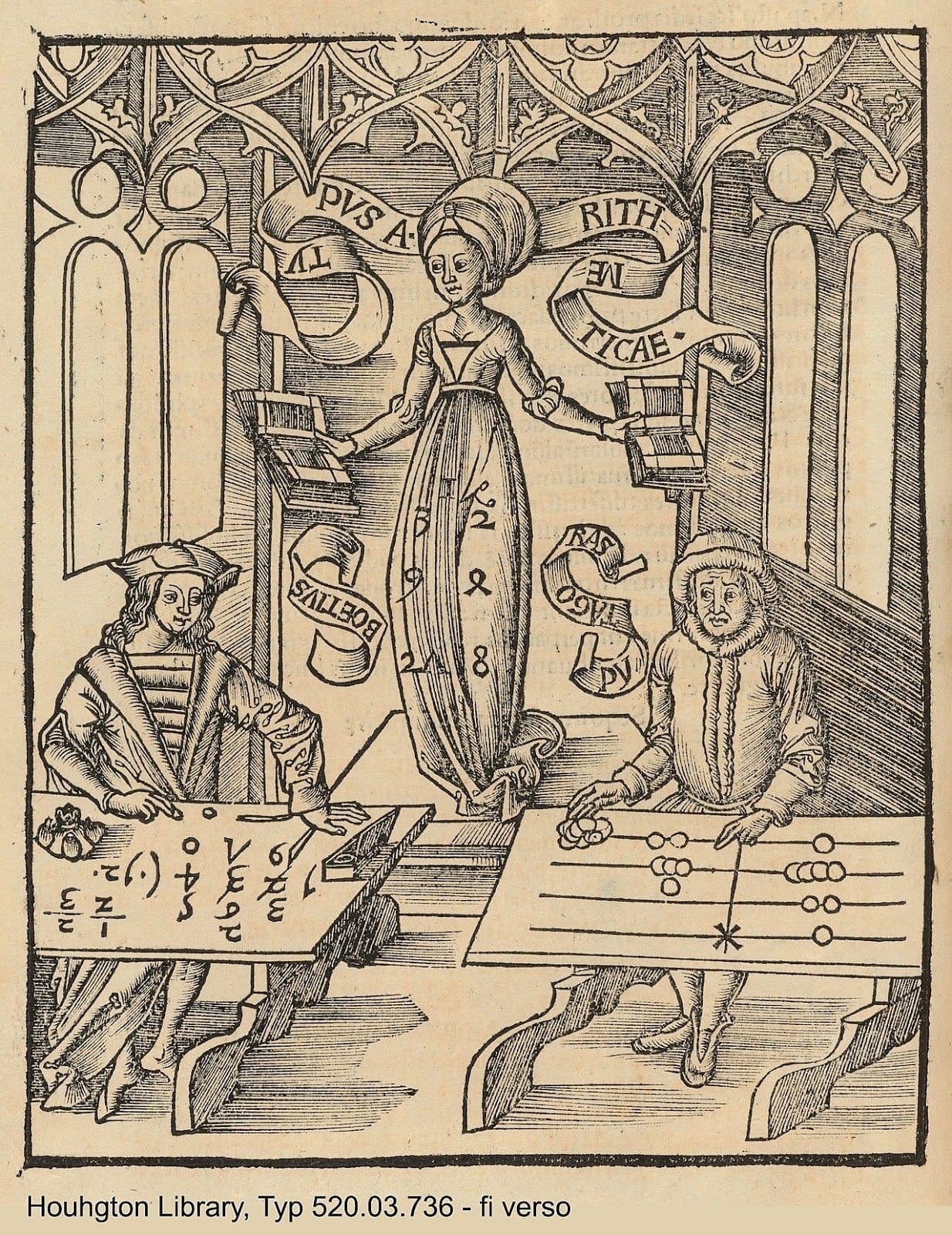
Historical street fight? Margarita Philosophica by Gregor Reisch, 1508, featured this image of Hindu-Arabic numerals outdoing an abacus based on Roman numerals.
(It also didn’t hurt that Leonardo Da Vinci was an early reader of Summa, used its mathematical principles to help him paint The Last Supper, and illustrated Pacioli’s later work De Divina Proportione.)
In Summa, Pacioli advocated for a three-book system. He recommended (1) keeping track of inventory and (2) recording daily transactions in a memorandum or journal (the “original books of entry” referenced in the definition of a ledger). Most importantly, he identified (3) a formal ledger as the ultimate source of truth for business transactions.

NBD, just a mathematical collab between the father of modern accounting and Leonardo Da Vinci
In these systems, some contend, lie the true origins of capitalism. As early as 1902, Werner Sombart argued that "capitalism and double entry bookkeeping are absolutely in-dissociable,” their relationship being “that of form to content."
Why Double-Entry Matters
Double-entry accounting—wherein every transaction is entered twice, once as a debit and once as a credit—has a number of benefits. In the case of double-entry ledger databases, accounts are much more consistent (and thus accurate) at scale. (For those looking to dig deeper here, check our multi-part series on accounting for developers.)
Other benefits of double-entry include that it:
- Provides a complete picture of financial activity
- Makes audits and the preparation of financial statements easier
- Reduces the risk of errors and fraud
Modern Treasury Ledgers maintain an ongoing, up-to-date record of all debits and credits posted within a product or platform. With this transparency and accuracy, businesses can keep a high volume of data about transactions and balances flowing through their application.
Capacity For Scale
Just as clay was overtaken by paper as a primary record-keeping tool, ledgers have necessarily evolved as businesses grow, needs change, and technology accelerates. At a high level, we can trace the evolution of ledgers from tools (stylus and stone), to books, to the internet—in each case the potential for growth and scale increasing.

One of Edward Blackwell’s giant ledgers
Let’s pause for a moment on “the books,” a nomenclature we’ve retained even though the bulk of today’s accounting happens digitally. As (1) early-day businesses expanded in complexity, (2) double-entry bookkeeping became the norm, and (3) printing expanded, ledgers got longer and bigger. Case in point: “ledger-sized” paper is still 11’’ X 17’’, which gives some sense for the size of olden accounts.
A few historical examples of ledgers (and commerce) scaling up include:
- An Italian Banking Ledger from 1593-1595—it’s over 19 inches tall and tracks debits and credits from a Roman banking firm.
- A customer ledger from London goldsmith and banker Edward Backwell, one of 9 volumes. (Another volume is described as “containing well over six hundred original acquittances for payments received, over forty of which are signed by him ["per me Edward Backwell"], kept in one volume and two loose gatherings.”)
- Merchant William Ramsey’s work desk from the mid-1700s, built to hold ten ledgers.
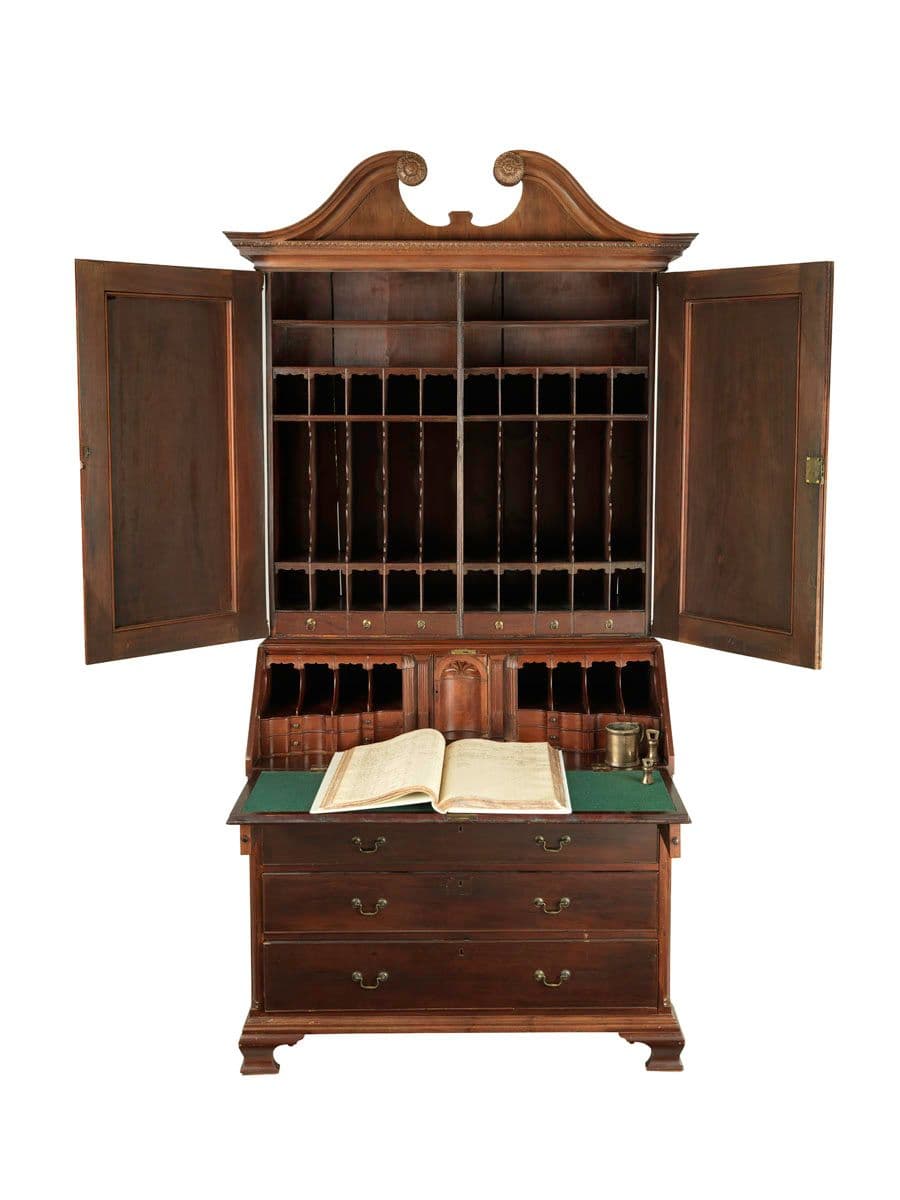
Never buy a desk that won’t can’t accommodate your growing ledger collection—William Ramsey prepped himself for success.
It would be remiss to trace the scaling and growth of economies evidenced by ledgers without acknowledging the human cost. Indeed, in the US, ledgers have preserved a painful history of violence and cruelty, including war expense accounts and slave trading ledgers. And any history of ledgers would be incomplete without ledger art.
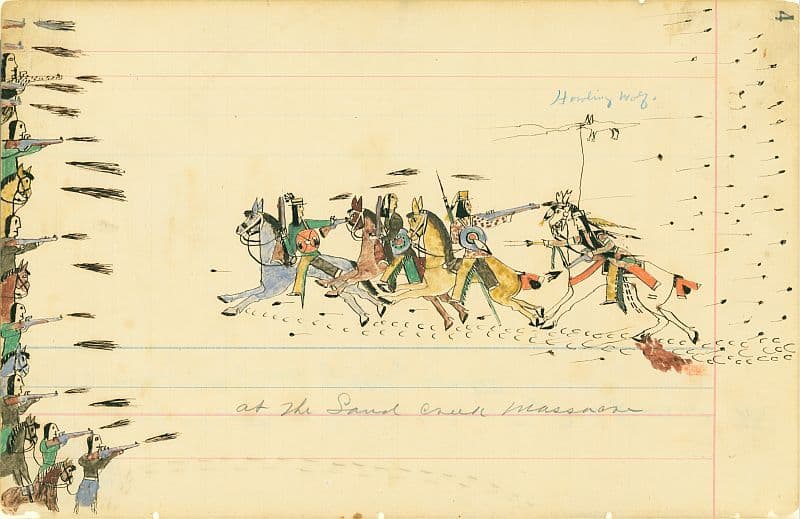
The Sand Creek massacre as drawn by eyewitness Howling Wolf (1874–1875)
Beginning circa 1830, as US exploration continued to scale, members of the Plains Indian tribe repurposed ledger pages to create sketches, drawings, and paintings. On the paper used to account for settler's assets (including those taken from the tribe), the Plains people recorded their own “accounts”—narrative depictions of daily history.
This artwork captures hardships (war and massacres, for example) and also everyday life (romance and umbrellas). And like all visionary technology, ledger art evolved in response to changing (and challenging) circumstances to showcase insight, creativity, and resourcefulness.
Why Scalability Matters
Throughout history, the desire for growth has propelled innovation. Even Excel, a revolutionary software for general ledgering released in 1985, evolved in response to less scalable iterations. The first digital spreadsheet software was VisiCalc, and the first version in 1978 only allowed for calculations using five columns and 20 rows.
Internet technology has made much manual (and most hand-written) accounting obsolete. Indeed, even the relatively limited capabilities of VisiCalc launched it into “killer app” status (ie. people bought the computer for the software) with over 70K copies sold over six years—it saved number-crunchers literally tens of hours every week.
One reason the history of ledgers is so compelling is that most business teams couldn’t imagine keeping their books in such labor-intensive ways. For digital money movement, technology is the only way today’s enterprises can keep organized and keep pace with their operations.
Choosing a financial ledgering system that will be consistently effective and robust at scale is vital because:
- It supports sustainable, long-term business growth
- It saves time and hassle down the road
- It allows companies to focus on innovating, instead of administrative hassles
Ledgers from Modern Treasury is designed to give quickly-growing companies a powerful, scalable source of truth for financial transactions and performance. Our customers have used ledgers to help build and scale businesses from fitness class marketplaces to capital access for businesses.
From Past To Present With Modern Treasury
In researching for this article, I checked “ledger” on Google Trends—if you follow my course, you’ll see a sizable peak in search traffic during 2008. This is linked to both crypto (Ledger’s hardware wallets) and Heath Ledger (of the Dark Knight), with the bulk pursuing content on the latter. (RIP, Heath; you were incredible.)
That said, ledgers (and modern ledgering solutions) are more than a trend. From clay-based accounting and the abacus to APIs, our arrival at today’s money movement software was hard won and (we believe) worth the wait. Ledgers from Modern Treasury is the next evolution of immutable, double-entry, and scalable accounting. And our team is eager to help you leave your own mark on history: reach out or start building with Ledgers today.
Thanks, Merriam-Webster.
Thanks to Jane Gleeson-White, author of Double Entry: How the Merchants of Venice Created Modern Finance, for the fascinating research.




